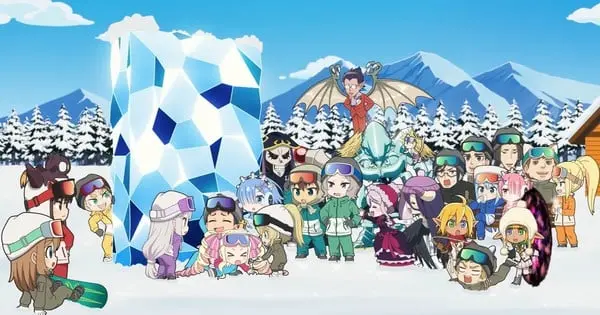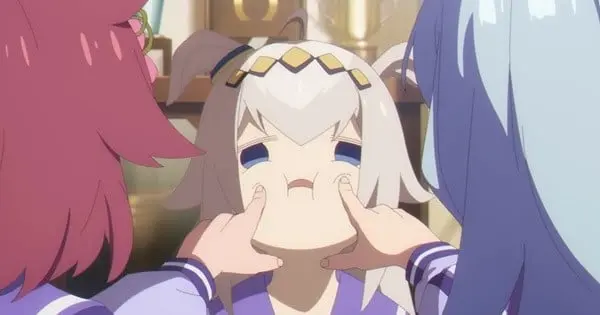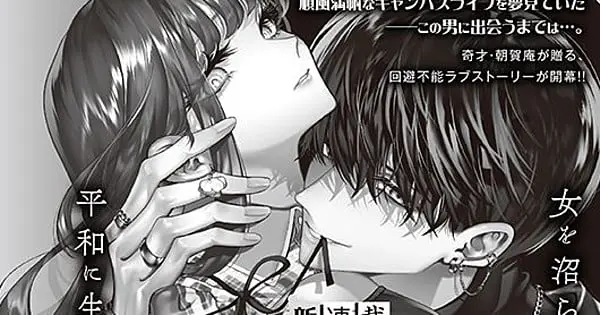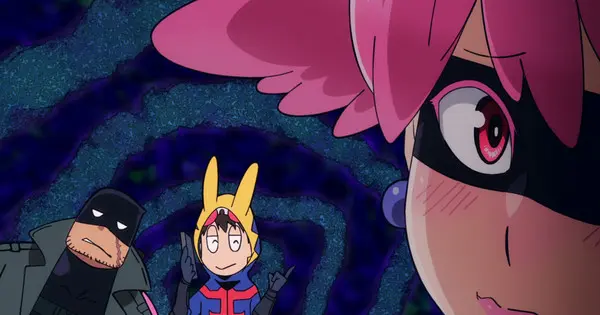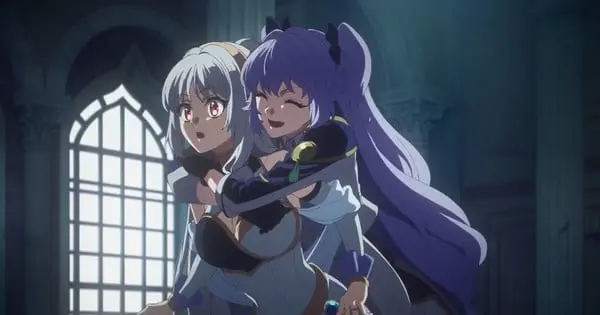“My Hero Academia: Vigilantes” episode 3, titled “Bee,” offers a deeper dive into the lives of Koichi Haimawari and his vigilante companions, while also introducing a central antagonist and setting the stage for future conflicts. Released on April 21, 2025, this episode balances humor, action, and character development, providing a compelling narrative that expands the “My Hero Academia” universe.
A Glimpse into Vigilante Life
The episode opens by contrasting Koichi’s dual life as a college student and a vigilante. While attending a lecture, his teacher discusses the history of heroes and vigilantes, noting that all heroes started as vigilantes before the Pro Hero System was established. This prompts Koichi to reflect on his own life, balancing his studies and a job he dislikes with his unpaid vigilante activities. Despite the challenges, he finds fulfillment in his new lifestyle.
Upon returning home, Koichi discovers that his apartment has become the unofficial base of operations for Knuckleduster and Pop Step. Knuckleduster is seen casually relaxing in Koichi’s home, while Pop Step prepares for a performance. This arrangement highlights the unconventional nature of their team and the blurring lines between their personal lives and vigilante activities.
Pop Step’s Performance and a Trigger-Fueled Fan
The episode shifts focus to Pop Step’s burgeoning idol career, showcasing her performance and the enthusiastic crowd that gathers to support her. Among the fans are two middle schoolers who had previously fought each other, now united in their admiration for Pop Step. However, the joyous atmosphere is disrupted when an obsessive fan injects himself with Trigger, a drug that amplifies Quirks, in an attempt to get closer to Pop Step.
The fan transforms into a slimy, giant eel and begins wreaking havoc, targeting Pop Step. Koichi and Knuckleduster arrive to help, but the villain’s slippery nature makes him difficult to apprehend. Knuckleduster cleverly devises a plan involving an udon shop, leading Pop Step to lure the villain into an alley. Despite her fear, Pop Step agrees to shake the villain’s hand, but he attempts to hug and kiss her, causing her to panic.
In a coordinated effort, Koichi and Knuckleduster use wheat flour to neutralize the villain’s slime, allowing them to capture him. This scene showcases the team’s resourcefulness and their ability to work together in unconventional situations. Afterward, the vigilantes reunite at Koichi’s apartment, where he acknowledges his happiness with his chaotic new life.
The Shadowy Threat of Trigger and Queen Bee
As the vigilantes deal with the aftermath of the incident, the police force discusses the growing problem of Trigger distribution in the city. Detectives suspect that the free distribution of the drug may be part of a larger scheme.
Meanwhile, the episode introduces Kuin Hachisuka, also known as Queen Bee, a seemingly ordinary high schooler who is secretly a part-time villain. Kuin possesses the Quirk “Queen Bee,” which allows her to control bees. She uses her bees to inject Trigger into unsuspecting individuals, turning them into instant villains and creating chaos throughout the city.
Kuin’s plan is set in motion as she unleashes a swarm of bees carrying Trigger, causing multiple people to transform into villains. The chaos is so widespread that Teruo and Namimaru, the two middle schoolers from Pop Step’s concert, are separated. Pro Heroes, including All Might, Endeavor, Eraserhead, Ingenium, and Present Mic, quickly respond to the emergency, neutralizing the villains and restoring order.
Knuckleduster notices a suspicious bee and follows it, eventually capturing it and questioning Namimaru. When Knuckleduster crushes the bee, Kuin is injured, revealing the connection between her and the insects. The episode concludes with Kuin, pretending to befriend Teruo, leading him away while harboring sinister intentions.
Themes and Analysis
Episode 3 of “My Hero Academia: Vigilantes” explores several key themes:
The Nature of Heroism: The episode contrasts the ideals of licensed Pro Heroes with the realities of vigilante work, highlighting the sacrifices and challenges faced by those who operate outside the law. Koichi’s internal conflict between his desire to be a hero and his responsibilities as a student and worker underscores the complexities of heroism.
The Dark Side of Hero Society: The introduction of Trigger and the emergence of instant villains expose the underbelly of the seemingly utopian hero society. The episode suggests that the pursuit of power and recognition can lead to corruption and exploitation.
The Value of Teamwork: Despite their differences, Koichi, Knuckleduster, and Pop Step demonstrate the importance of teamwork and collaboration. Their ability to combine their unique skills and personalities allows them to overcome challenges and protect their community.
The Vulnerability of Idols: Pop Step’s experience with the Trigger-fueled fan highlights the vulnerability of idols and the potential for exploitation in the entertainment industry. The episode touches on the issue of fan entitlement and the importance of respecting boundaries.
Production Quality and Direction
Studio Bones Film delivers another impressive episode with smooth animation, dynamic action sequences, and comic-book-inspired visuals. The pacing of the episode is well-managed, balancing character development with plot progression. The introduction of Kuin Hachisuka as a central antagonist adds a much-needed dose of intensity and sets the stage for future conflicts.
Reception and Impact
Episode 3 has been praised for its mature tone, well-developed characters, and engaging storyline. Critics have noted that the episode addresses some of the issues present in the main “My Hero Academia” series, such as the oversexualization of female characters, and offers a more nuanced perspective on hero society.
Final Thoughts
“My Hero Academia: Vigilantes” episode 3 is a standout installment that effectively balances humor, action, and character development. With the introduction of Kuin Hachisuka and the growing threat of Trigger, the series is poised to explore deeper themes and challenge the established norms of the “My Hero Academia” universe. The episode successfully sets the tone for future conflicts and establishes the groundwork for a compelling narrative.

